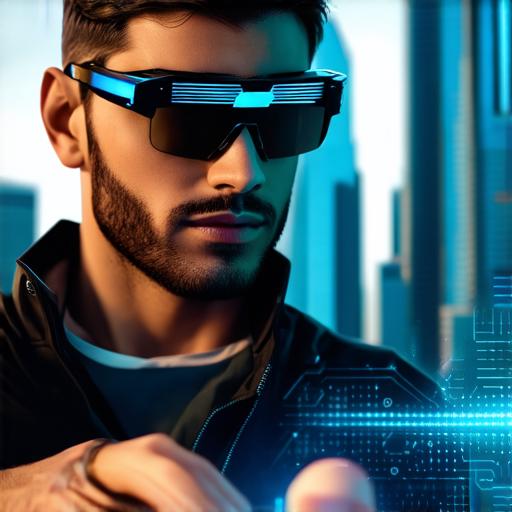Introduction: What is Augmented Reality?
AR is a technology that overlays digital objects onto the real-world environment. This allows users to experience an enhanced version of reality, where virtual objects can be interacted with in real-time. AR technology has been around for several years, but it was only with the advent of smartphones and mobile devices that it became accessible to a wider audience.
AR technology is based on computer vision algorithms that track the position of a device in the physical world. This allows the device to identify the real-world environment and overlay digital objects onto it. AR applications can be used for a wide range of purposes, including education, entertainment, and commerce.
The Benefits of Augmented Reality

AR technology has many benefits that make it an attractive option for developers. Here are just a few examples:
- Improved engagement: AR applications can be highly engaging and interactive, which can help to capture the attention of users and keep them coming back for more. This is particularly useful in industries like education, where AR can be used to create interactive lessons that help students learn in a fun and engaging way.
- Enhanced experiences: AR technology allows users to experience an enhanced version of reality, which can be both educational and entertaining. By overlaying digital objects onto the real-world environment, AR applications can provide users with new perspectives on familiar surroundings.
- Increased efficiency: AR technology can help to streamline processes in industries like manufacturing, where it can be used to provide real-time feedback on production lines. This can help to improve efficiency and reduce errors, which can ultimately save time and money.
- Improved customer experiences: AR applications can be used to create highly interactive and engaging shopping experiences for customers. By allowing them to visualize products in a virtual environment, AR applications can help customers make more informed purchasing decisions.
How Augmented Reality is Implemented
AR technology can be implemented in a variety of ways, depending on the needs of the application. Here are some examples:
- Marker-based AR: This is one of the most common forms of AR, and it involves using a marker (such as a QR code or a barcode) to trigger the AR experience. When the user scans the marker with their device, the AR application overlay digital objects onto the real-world environment.
- Image recognition-based AR: This form of AR uses computer vision algorithms to recognize images in the real-world environment and trigger an AR experience. For example, an AR application could use image recognition to identify a piece of furniture and then overlay information about it onto the device’s screen.
- GPS-based AR: This form of AR uses the device’s GPS data to determine its location in the real-world environment and trigger an AR experience. For example, an AR application could use GPS to provide users with information about nearby landmarks or historical sites.
- Object recognition-based AR: This form of AR uses computer vision algorithms to recognize objects in the real-world environment and trigger an AR experience. For example, an AR application could use object recognition to overlay information about a building onto the device’s screen when it is pointed at the building.
Real-Life Examples of Augmented Reality in Action
There are many examples of how AR technology is being used in different industries. Here are a few real-life examples:
